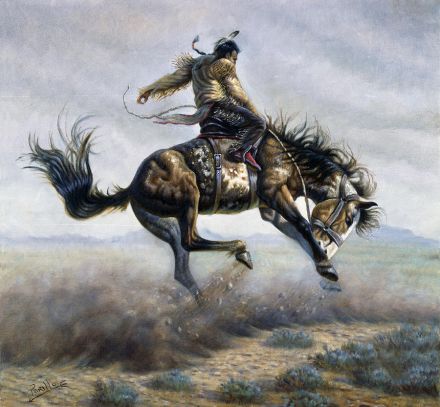Domesticate Horses (sage ability)
Describes the process by which a wild horse is subdued and trained, so that it may be ridden. Wild horses have not been handled at birth or within the first few days of their lives, so unlike domestic horses they have special characteristics that bely ordinary training. Additional, some horses of domesticated stock, that have not been properly brought up, called "feral," may resist training like wild horses. Bad habits of these horses include wood chewing, restlessness, kicking, rocking back and forth ("weaving") and other vices.
The process of taming the horse requires a mouthing-bridle, a noseband (cavison), a saddle (the crupper and stirrups of which should be left off) and a lead. The time it may take before it is prudent to mount the colt after putting it through some paces depends upon its temper, tractability and disposition; 2-8 days is a fair time frame, with the trainer knowing when the horse is ready. The horse is then soothed and coaxed until saddled; the horse is made tired for 2-3 hours before it is mounted; and then managed for 2-3 minutes. The character rider must make a dexterity check, or be thrown for 0-1 point of damage. To complete the day's training, the horse must be remounted until a successful dexterity check is made.
A horse will typically require 1-4 days of this treatment (though multiple horses can be geared by the character, then worn out by inexperienced helpers, before the character rides them one by one). Once the horse has been ridden sufficiently by the character, it is safe to have it ridden by others familiar with horses.
A wild horse made tame may require a full year before it will cease to be fractious with an inexperienced rider, fighting the bit or otherwise resisting even when the rider is assisted. Expect 1 in 6 tamed horses to behave in this fashion. However, once they have settled down for 7-12 months, they will properly obey like any other horse.
See Horseback Riding
